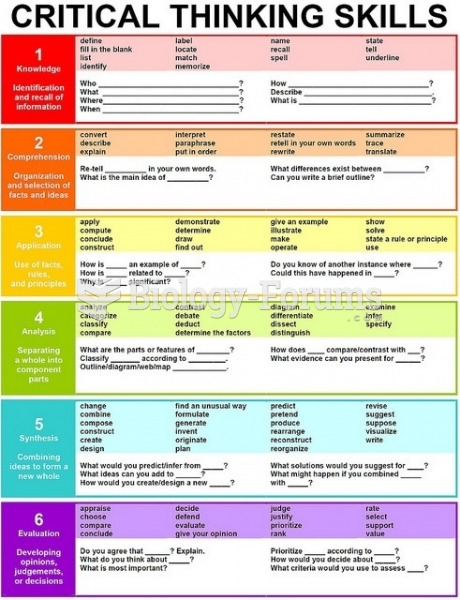Answer to Question 1
Middle school students are in early adolescence and are undergoing major physical changes related to puberty, social changes related to the desire to conform to the norms of a peer group, emotional changes related to the hormonal changes of puberty and the continued influence of egocentric thought, and cognitive changes related to the refinement of concrete operational schemes and the beginnings of formal operational schemes.
Because early adolescence is characterized by an increased need for autonomy, an acute self-consciousness, the developing awareness of others' feelings and the importance of peer acceptance, concerns about self-image, and the capacity for abstract thought, school environments should stress the following characteristics: students should be allowed to make decisions about such things as classroom rules, where they sit, and time spent on various tasks. Teachers should strive to establish a friendly, supportive, and caring relationship with students; stress small-group and individualized instruction and deemphasize whole-class instruction and ability grouping; use predetermined standards for grades rather than grading on a curve; and emphasize discussion and group problem-solving activities rather than copying information from textbooks or filling out worksheets.
Answer to Question 2
Jean Piaget's developmental theory, discussed in Chapter 2, holds that learning is the natural result of an intrinsic drive to resolve inconsistencies and contradictions encountered by the individual interacting in the environment. Cognitive constructivism focuses on the role of cognitive processes that take place within the individual during meaningful learning. Cognitive constructivism is an outgrowth of Piaget's developmental theory because it focuses on the cognitive processes that take place within individuals.
Lev Vygotsky's theory of development, also discussed in Chapter 2, focuses on the role of social interaction and cultural norms in the learning process. Social constructivism focuses on the role of culture and social interaction in the process of meaningful learning. According to this view, meaningful learning occurs when people are explicitly taught how to use the psychological tools of their culture and are then given the chance to use these tools to foster individual and/or shared understanding. Proponents of this approach to learning maintain the importance of giving students opportunities to engage in open-ended discussions with peers and teachers about the meaning of terms and procedures, the relationships among ideas, and the applicability of knowledge to specific contexts. This process, referred to as negotiating meaning, has its roots in Vygotsky's theory of development.







